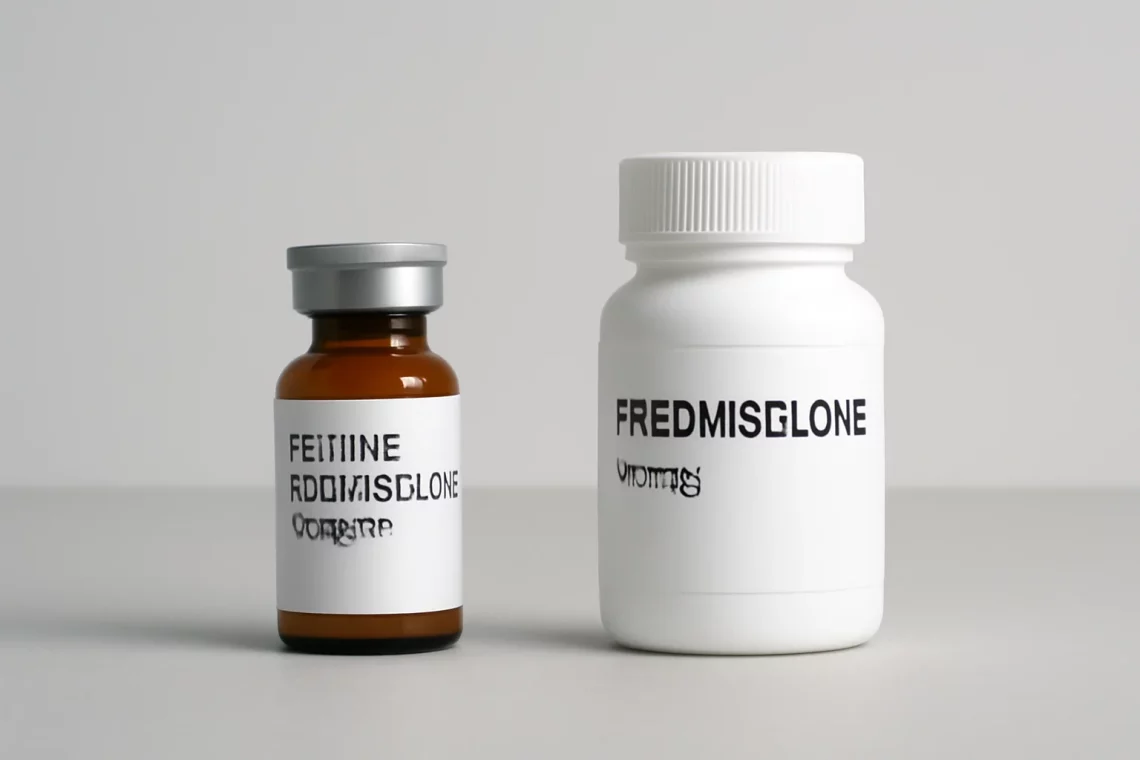
Methylprednisolone vs Prednisolone: Key Differences and Uses
Methylprednisolone and prednisolone are two corticosteroid medications commonly used in the treatment of various inflammatory and autoimmune conditions. These drugs mimic the effects of hormones that are naturally produced in the adrenal glands, helping to reduce inflammation and suppress the immune response. While they share many similarities, understanding the differences between these two medications is crucial for both patients and healthcare providers.
The choice of medication can significantly impact treatment outcomes, as each has unique properties that may suit different conditions or patient profiles. Factors such as the potency, duration of action, and side effects play vital roles in determining which medication is more appropriate in a given situation. As both medications have been extensively studied and prescribed, they have established roles in managing conditions such as asthma, arthritis, allergies, and certain skin disorders.
In addition to their therapeutic effects, methylprednisolone and prednisolone also have a range of potential side effects that patients should be aware of. Understanding these aspects can help individuals make informed decisions about their treatment options and discuss them effectively with their healthcare providers. By exploring the nuances of these two medications, patients can gain a clearer perspective on their health and treatment pathways.
Understanding Methylprednisolone
Methylprednisolone is a synthetic corticosteroid that is known for its anti-inflammatory properties. It is often used to treat conditions that involve inflammation, such as rheumatoid arthritis, lupus, and certain skin disorders, among others. The medication works by suppressing the immune system’s response, thereby reducing inflammation and alleviating symptoms associated with various medical conditions.
One of the key advantages of methylprednisolone is its potency. It is generally considered to be more potent than prednisolone, meaning that lower doses may achieve similar therapeutic effects. This can be particularly beneficial for patients who may be sensitive to the side effects of corticosteroids, as using a lower dose can minimize adverse reactions.
Methylprednisolone is typically administered in several forms, including oral tablets, injectable solutions, and intravenous formulations. The route of administration may vary based on the specific condition being treated and the patient’s overall health status. For instance, intravenous methylprednisolone may be utilized in emergency situations, such as severe allergic reactions or acute exacerbations of chronic conditions.
While methylprednisolone is effective in managing inflammation, it is not without potential side effects. Common side effects may include weight gain, mood changes, increased blood sugar levels, and gastrointestinal disturbances. Long-term use of corticosteroids can lead to more serious complications, such as osteoporosis, hypertension, and increased susceptibility to infections. Therefore, it is essential for healthcare providers to carefully monitor patients on methylprednisolone and adjust dosages as necessary.
In conclusion, methylprednisolone serves as a powerful tool in the management of various inflammatory conditions. Its potency and versatility make it a preferred choice for many healthcare professionals, but it requires careful consideration of potential side effects and individual patient needs.
Exploring Prednisolone
Prednisolone is another synthetic corticosteroid that has been widely used in the treatment of various inflammatory and autoimmune diseases. Like methylprednisolone, it mimics the effects of natural hormones produced by the adrenal glands, helping to reduce inflammation and suppress the immune response.
One of the primary differences between prednisolone and methylprednisolone is their relative potency. Prednisolone is generally considered to be less potent than methylprednisolone, which means that higher doses may be necessary to achieve comparable therapeutic effects. This distinction is important for healthcare providers to consider when determining the appropriate treatment regimen for their patients.
Prednisolone is available in several formulations, including oral tablets, liquid solutions, and injectable forms. The choice of formulation may depend on the patient’s specific condition, the severity of symptoms, and their individual preferences. For example, oral prednisolone is often prescribed for chronic conditions requiring long-term management, while injectable forms may be used for acute exacerbations or flare-ups.
The side effect profile of prednisolone is similar to that of methylprednisolone, including weight gain, mood changes, and increased risk for infections. However, the potential for adverse effects can differ based on dosage and duration of treatment. Long-term use of prednisolone may also lead to complications such as adrenal suppression and osteoporosis, necessitating regular monitoring by healthcare providers.
Given its effectiveness and established role in managing a variety of conditions, prednisolone remains a widely used corticosteroid. Patients should work closely with their healthcare providers to determine the most appropriate treatment plan based on their individual needs and circumstances.
Comparative Analysis: Methylprednisolone vs. Prednisolone
When comparing methylprednisolone and prednisolone, there are several factors to consider that can influence treatment decisions. Although both medications belong to the same class of drugs and serve similar purposes, their differences in potency, side effects, and administration routes can make one more suitable than the other for certain patients.
Potency is a key distinguishing factor. Methylprednisolone is often regarded as more potent than prednisolone, which can result in effective treatment at lower doses. This characteristic is particularly advantageous for patients who may experience significant side effects from corticosteroids, allowing for tailored treatment that balances efficacy with safety.
Another important aspect is the duration of action. Methylprednisolone typically has a longer half-life compared to prednisolone, which means it may remain active in the body for a more extended period. This prolonged effect can be beneficial for managing chronic conditions, as it may allow for less frequent dosing. On the other hand, prednisolone may be preferred for acute situations where a rapid response is required.
Side effects are a critical consideration when choosing between these medications. While both methylprednisolone and prednisolone share common side effects, individual responses can vary. Some patients may tolerate one medication better than the other, making it essential for healthcare providers to monitor patients closely and adjust treatment as needed.
Ultimately, the choice between methylprednisolone and prednisolone should be made in collaboration with a healthcare professional. Factors such as the patient’s medical history, specific condition, and individual response to treatment will guide the decision. Both medications have their place in clinical practice, and understanding their differences can help ensure optimal patient care.
Conclusion
In summary, both methylprednisolone and prednisolone are valuable corticosteroids used in the treatment of inflammatory and autoimmune conditions. While they share similar mechanisms of action and therapeutic applications, their differences in potency, duration of action, and side effect profiles highlight the importance of individualized treatment plans.
Patients should engage in open discussions with their healthcare providers to determine which medication is most appropriate for their specific circumstances. By understanding the nuances of these medications, patients can make informed decisions about their treatment and overall health management.
**Disclaimer**: This article is not intended as medical advice. For any health issues or concerns, please consult your healthcare provider for personalized guidance.




